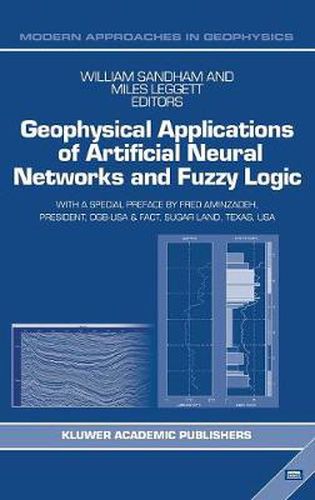Readings Newsletter
Become a Readings Member to make your shopping experience even easier.
Sign in or sign up for free!
You’re not far away from qualifying for FREE standard shipping within Australia
You’ve qualified for FREE standard shipping within Australia
The cart is loading…






This title is printed to order. This book may have been self-published. If so, we cannot guarantee the quality of the content. In the main most books will have gone through the editing process however some may not. We therefore suggest that you be aware of this before ordering this book. If in doubt check either the author or publisher’s details as we are unable to accept any returns unless they are faulty. Please contact us if you have any questions.
The past fifteen years has witnessed an explosive growth in the fundamental research and applications of artificial neural networks (ANNs) and fuzzy logic (FL). The main impetus behind this growth has been the ability of such methods to offer solutions not amenable to conventional techniques, particularly in application domains involving pattern recognition, prediction and control. Although the origins of ANNs and FL may be traced back to the 1940s and 1960s, respectively, the most rapid progress has only been achieved in the last fifteen years. This has been due to significant theoretical advances in our understanding of ANNs and FL, complemented by major technological developments in high-speed computing. In geophysics, ANNs and FL have enjoyed significant success and are now employed routinely in the following areas (amongst others): 1. Exploration Seismology. (a) Seismic data processing (trace editing; first break picking; deconvolution and multiple suppression; wavelet estimation; velocity analysis; noise identification/reduction; statics analysis; dataset matching/prediction, attenuation), (b) AVO analysis, © Chimneys, (d) Compression I dimensionality reduction, (e) Shear-wave analysis, (f) Interpretation (event tracking; lithology prediction and well-log analysis; prospect appraisal; hydrocarbon prediction; inversion; reservoir characterisation; quality assessment; tomography). 2. Earthquake Seismology and Subterranean Nuclear Explosions. 3. Mineral Exploration. 4. Electromagnetic I Potential Field Exploration. (a) Electromagnetic methods, (b) Potential field methods, © Ground penetrating radar, (d) Remote sensing, (e) inversion.
$9.00 standard shipping within Australia
FREE standard shipping within Australia for orders over $100.00
Express & International shipping calculated at checkout
This title is printed to order. This book may have been self-published. If so, we cannot guarantee the quality of the content. In the main most books will have gone through the editing process however some may not. We therefore suggest that you be aware of this before ordering this book. If in doubt check either the author or publisher’s details as we are unable to accept any returns unless they are faulty. Please contact us if you have any questions.
The past fifteen years has witnessed an explosive growth in the fundamental research and applications of artificial neural networks (ANNs) and fuzzy logic (FL). The main impetus behind this growth has been the ability of such methods to offer solutions not amenable to conventional techniques, particularly in application domains involving pattern recognition, prediction and control. Although the origins of ANNs and FL may be traced back to the 1940s and 1960s, respectively, the most rapid progress has only been achieved in the last fifteen years. This has been due to significant theoretical advances in our understanding of ANNs and FL, complemented by major technological developments in high-speed computing. In geophysics, ANNs and FL have enjoyed significant success and are now employed routinely in the following areas (amongst others): 1. Exploration Seismology. (a) Seismic data processing (trace editing; first break picking; deconvolution and multiple suppression; wavelet estimation; velocity analysis; noise identification/reduction; statics analysis; dataset matching/prediction, attenuation), (b) AVO analysis, © Chimneys, (d) Compression I dimensionality reduction, (e) Shear-wave analysis, (f) Interpretation (event tracking; lithology prediction and well-log analysis; prospect appraisal; hydrocarbon prediction; inversion; reservoir characterisation; quality assessment; tomography). 2. Earthquake Seismology and Subterranean Nuclear Explosions. 3. Mineral Exploration. 4. Electromagnetic I Potential Field Exploration. (a) Electromagnetic methods, (b) Potential field methods, © Ground penetrating radar, (d) Remote sensing, (e) inversion.